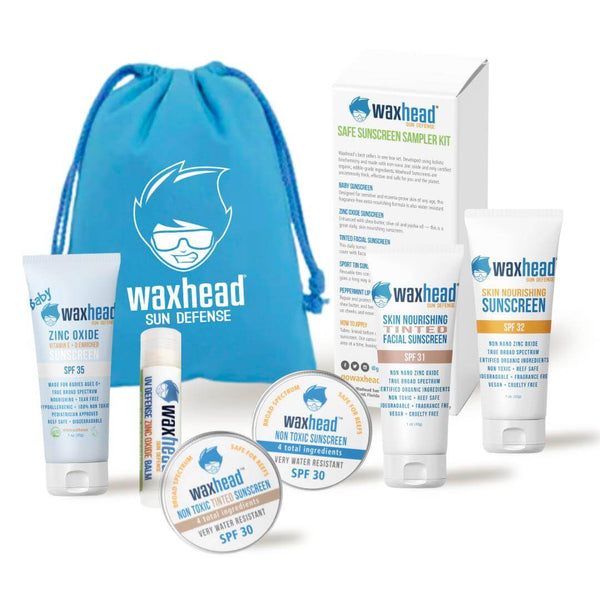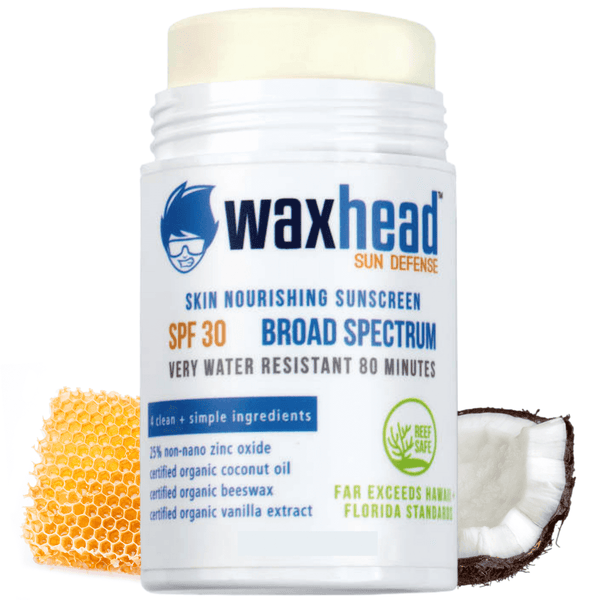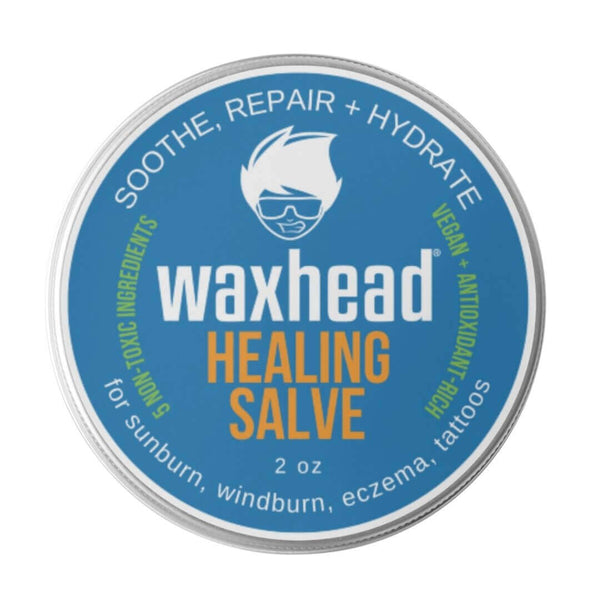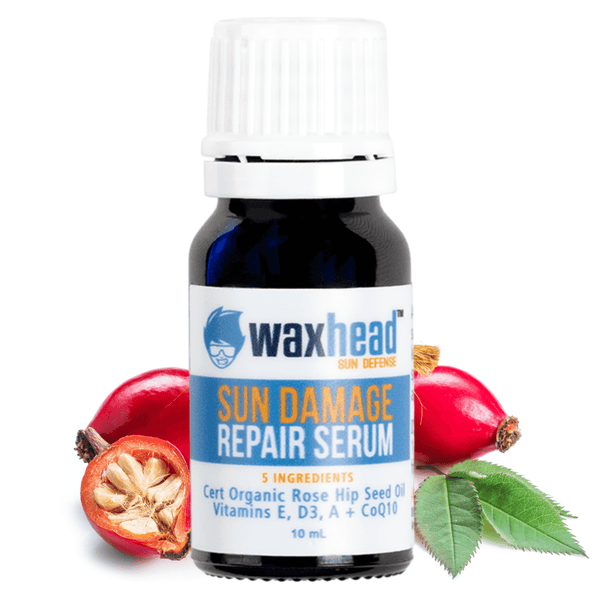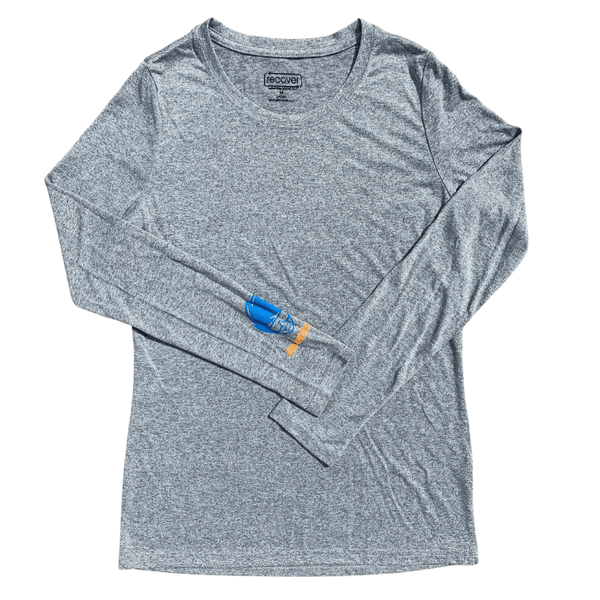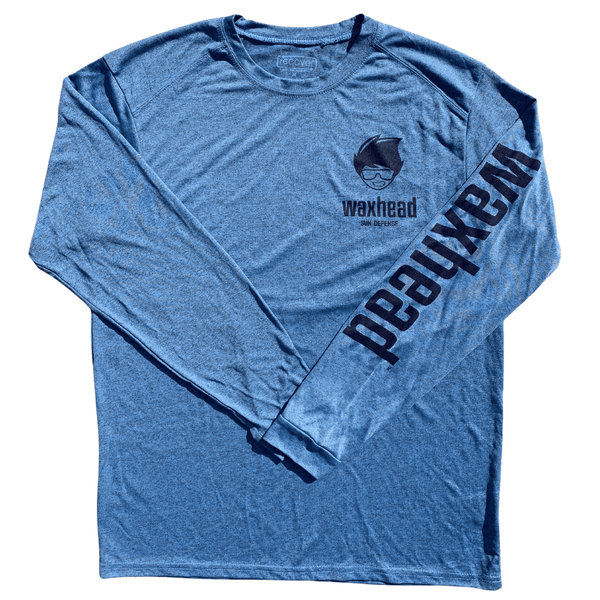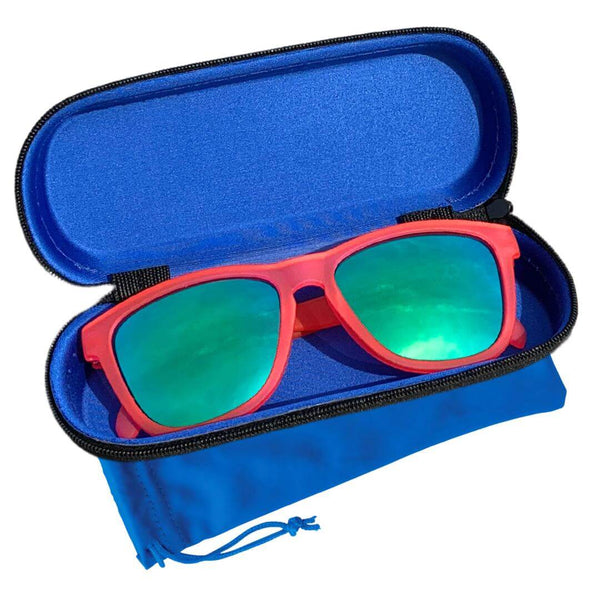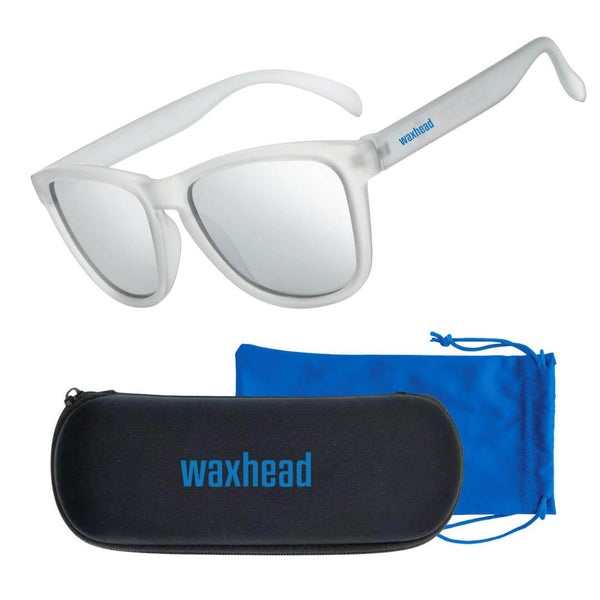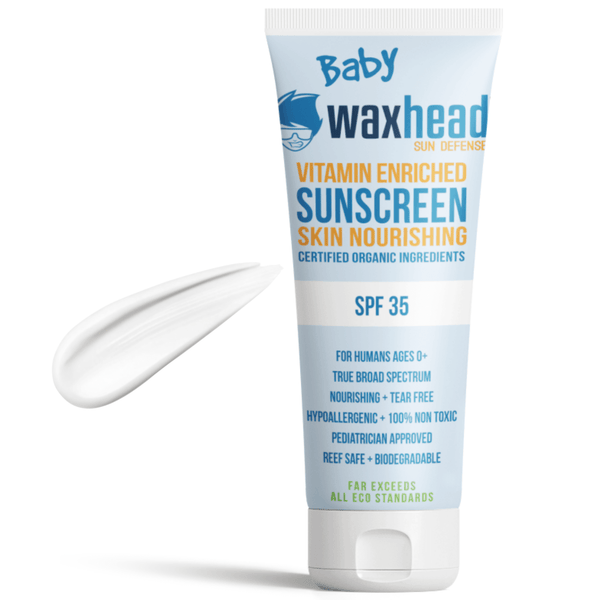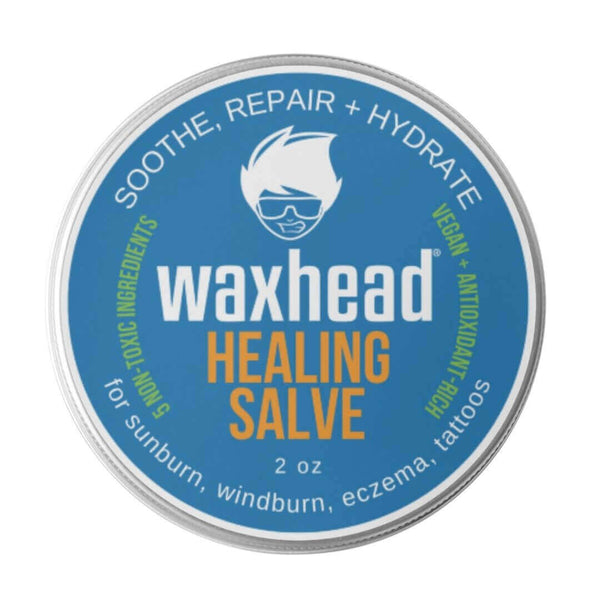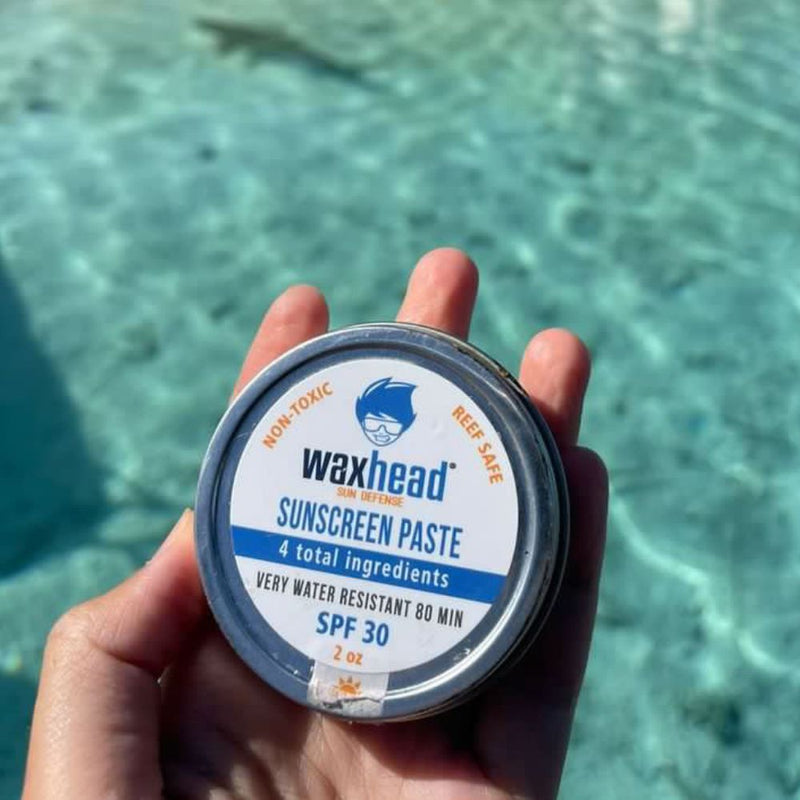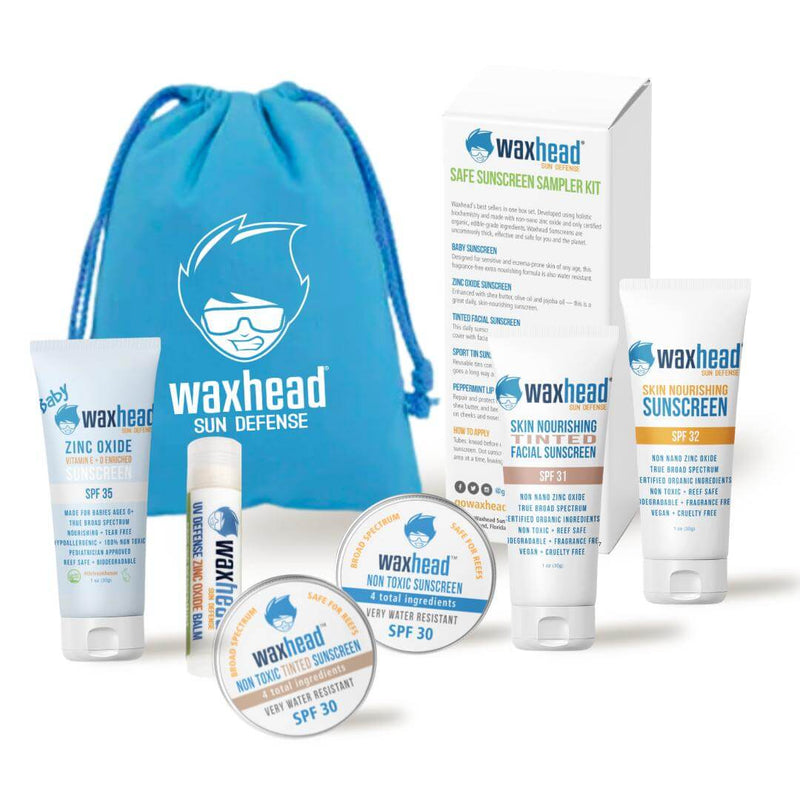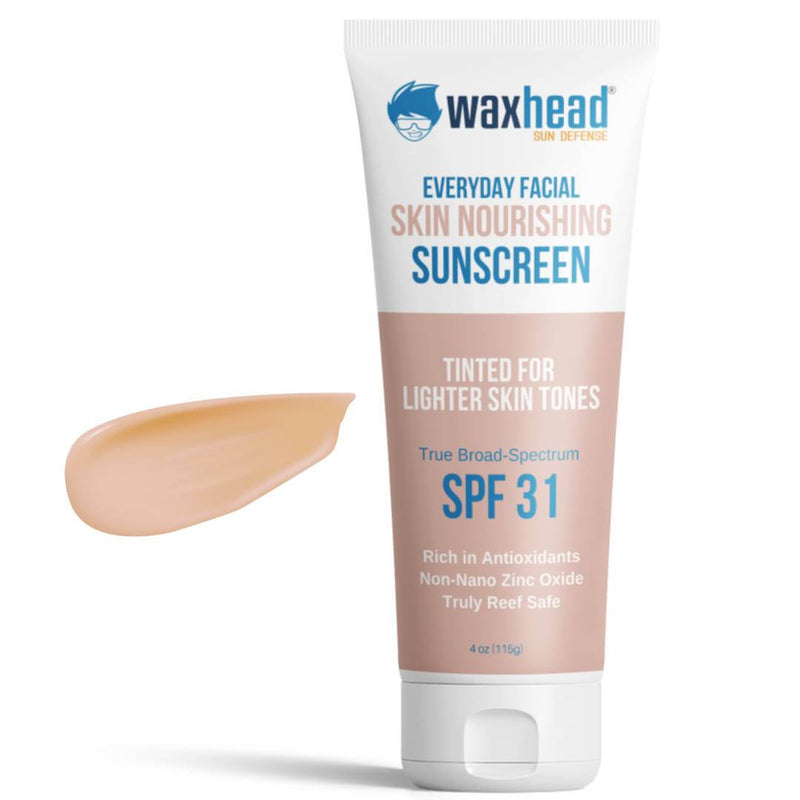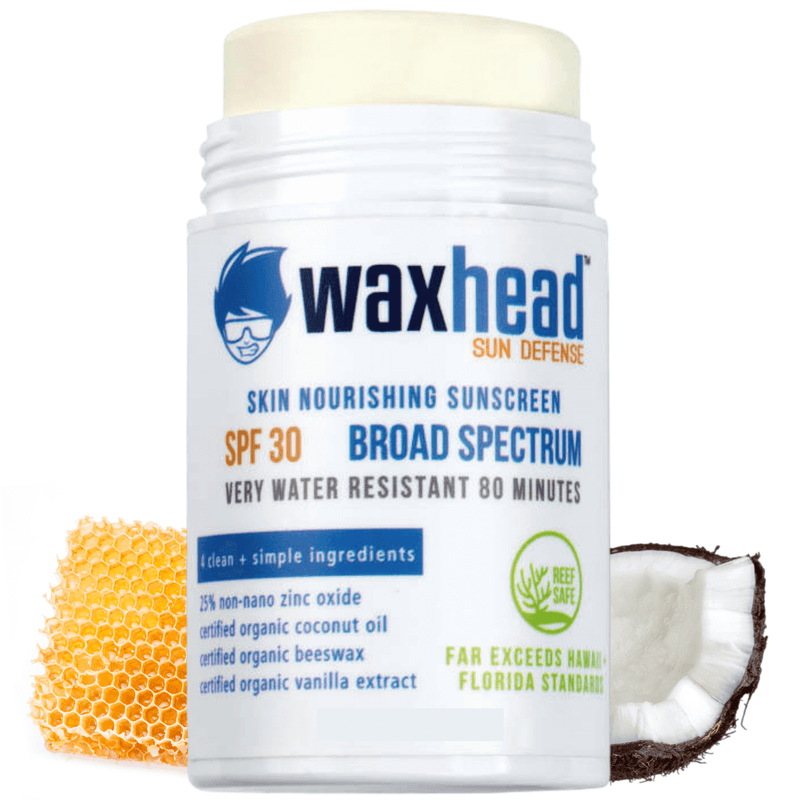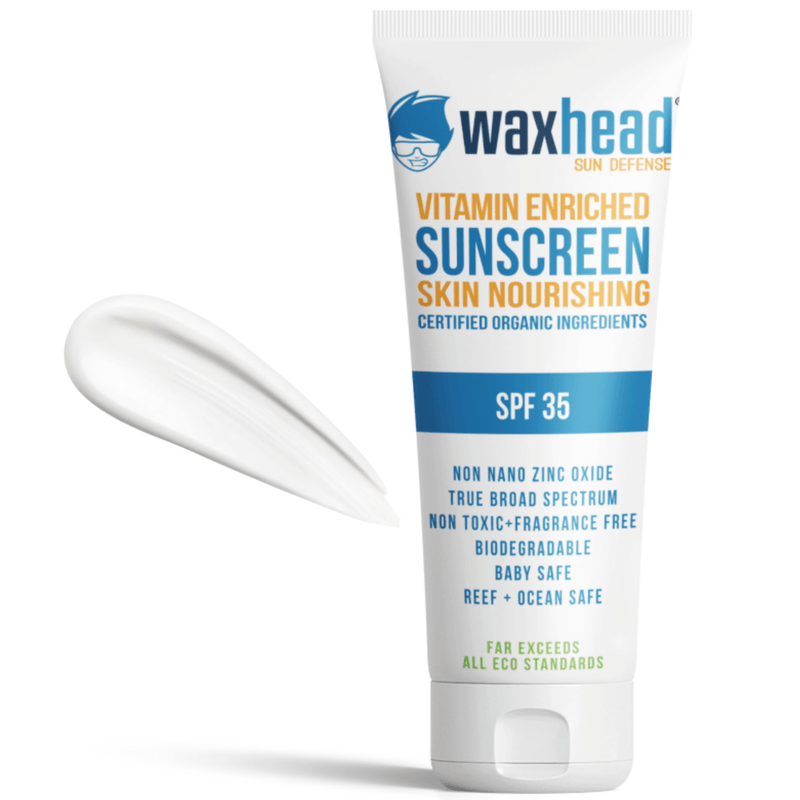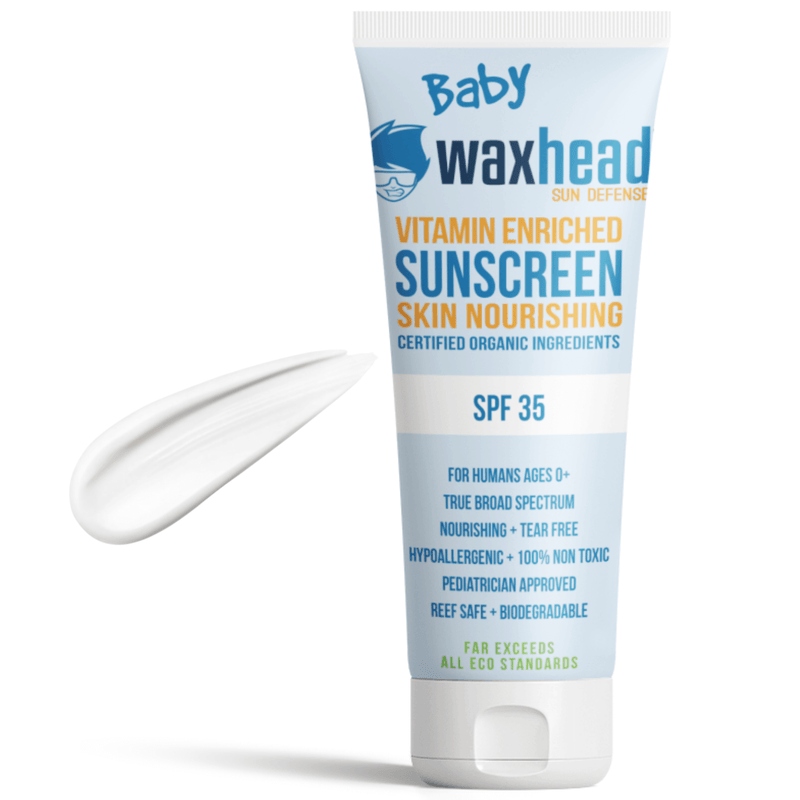As more people seek sun protection year-round, choosing reef-safe sunscreen becomes increasingly crucial. Neutrogena, a stalwart in skincare, offers its Beach Defense sunscreen. But does its effectiveness come at the cost of reef safety? Let's look up the ingredients and dig into the scientific research to uncover the truth.
Neutrogena: A Brief Background
Neutrogena, founded in 1930 by Emanuel Stolaroff, initially began as a cosmetics company. Over the decades, it evolved into a skincare giant renowned for its innovative products. Acquired by Johnson & Johnson in 1994, Neutrogena continued its commitment to providing effective skincare solutions.
Neutrogena Beach Defense Collection
In our quest to determine the reef safety of Neutrogena Beach Defense sunscreens, we'll closely examine the active sunscreen ingredients of the four products within the collection. By dissecting their formulations, we aim to assess their impact on coral reefs and the environment comprehensively.
Neutrogena Beach Defense Water + Sun Protection Sunscreen Spray Broad Spectrum SPF 50
Active Ingredients: avobenzone (3%), homosalate (10%), octisalate (5%), octocrylene (10%)
Result: Not reef safe because it contains avobenzone, homosalate, octisalate, and octocrylene.
Neutrogena Beach Defense Kids Sunscreen Stick with Broad Spectrum SPF 60+
Active Ingredients: Avobenzone (3%) Homosalate (15%) Octisalate (5%) Octocrylene (10%)
Result: Not reef safe because it contains avobenzone, homosalate, octisalate, and octocrylene.
Neutrogena Beach Defense Water + Sun Protection Oxybenzone-Free Sunscreen Lotion Broad Spectrum SPF 70
Active Ingredients: Avobenzone 3, Homosalate 15%, Octisalate 5%, Octocrylene 10%
Result: Not reef safe because it contains avobenzone, homosalate, octisalate, and octocrylene.
Neutrogena Beach Defense Kids Sunscreen Spray Broad Spectrum SPF 70 with Multi-Vitamins
Active Ingredients: Avobenzone (3%), Homosalate (15%), Octisalate (5%), Octocrylene (10%)
Result: Not reef safe because it contains avobenzone, homosalate, octisalate, and octocrylene.
Why Neutrogena Beach Defense is Not Reef Safe
Examining the ingredients of Neutrogena Beach Defense sunscreen reveals a blend of chemical compounds, which raises concerns about its reef safety. While these chemicals effectively absorb and scatter UV radiation, their impact on marine ecosystems is troubling. Every product in the Beach Defense Collection contains the following chemicals:
Avobenzone
While effective in blocking UVA rays, avobenzone degrades rapidly in sunlight and releases harmful byproducts that harm coral reefs. When avobenzone-containing sunscreens wash off swimmers' skin into the ocean (or in the shower), the chemical can accumulate in coastal waters, especially in popular tourist destinations.
Once in the marine environment, avobenzone undergoes photochemical reactions when exposed to sunlight, forming harmful byproducts. These byproducts can induce coral bleaching, disrupt coral reproduction and development, and even contribute to coral mortality. Additionally, avobenzone accumulates in the tissues of fish and other marine organisms, potentially disrupting their endocrine systems and overall health.
Homosalate
Homosalate also risks coral reefs and marine life due to its potential bioaccumulation and toxic effects. When sunscreen containing homosalate is applied and washed off in the ocean, the chemical can persist in aquatic environments, where it may bioaccumulate in marine organisms over time.
This accumulation can disrupt the natural balance of marine ecosystems, affecting both plant and animal life. Homosalate interferes with certain marine organisms' development and reproductive processes, further threatening the health and resilience of coral reefs. Moreover, the breakdown of homosalate in water can release harmful metabolites, exacerbating the chemical stress on marine ecosystems.
Octisalate
When sunscreen containing octisalate enters coastal waters, the chemical is dissolved and dispersed in water, where it is ingested by marine organisms such as fish, crustaceans, and plankton. Once absorbed, octisalate accumulates in the tissues of these organisms, leading to adverse effects on their health and reproductive processes.
Additionally, octisalate contributes to the formation of harmful algal blooms, further stressing marine ecosystems and depleting oxygen levels in the water. This disruption in the aquatic food chain can have cascading effects on coral reefs and other marine habitats, ultimately threatening their biodiversity and ecological resilience.
Octocrylene
When octocrylene enters the ocean, the chemical is dissolved and dispersed in water, which is ingested and absorbed by marine organisms. Once absorbed, octocrylene accumulates in the tissues of these organisms, leading to adverse health effects such as developmental abnormalities and reproductive disruptions.
Furthermore, octocrylene undergoes photodegradation in sunlight, forming toxic byproducts that harm coral reefs and other marine habitats. This degradation process reduces the effectiveness of sunscreen and releases harmful compounds into the water, further exacerbating the chemical stress on aquatic ecosystems.
The Dangers of Chemical Sunscreens
Chemical sunscreens, like those used in Neutrogena Beach Defense, pose risks to marine life and raise concerns for human health. Moreover, their potential to penetrate the skin and enter the bloodstream further underscores the need for safer alternatives.
It's Time to Embracing Non-Nano Zinc Oxide
In contrast to chemical sunscreens, non-nano zinc oxide sunscreens offer a reef-safe alternative. As a physical blocker, zinc oxide sits atop the skin's surface, reflecting and scattering harmful UV rays without penetrating the skin or posing risks to marine life. Its larger particle size prevents corals from ingesting it, thus safeguarding fragile reef ecosystems.
Formulated with non-nano zinc oxide, Waxhead Sunscreens provide broad-spectrum protection without compromising the health of our oceans. With a commitment to using natural, food-grade ingredients, Waxhead prioritizes human well-being and environmental sustainability. Our transparent skincare approach and dedication to reef-safe practices make Waxhead Sunscreens the ideal solution for conscious consumers looking to protect themselves and the planet.
Frequently Asked Questions
Is Neutrogena Beach Defense reef safe for snorkeling or swimming?
While Neutrogena Beach Defense may provide sun protection, its chemical ingredients threaten coral reefs. Opting for reef-safe alternatives, such as non-nano zinc oxide sunscreens, ensures protection without harming marine ecosystems.
Are any studies confirming the harmful effects of chemical sunscreens on coral reefs?
Studies have documented the harmful impact of chemical sunscreen ingredients on coral health, including coral bleaching, DNA damage, and impaired reproduction. These findings underscore the importance of choosing reef-safe sunscreens. Here are three studies:
- Downs, C.A. et al. "Toxicopathological Effects of the Sunscreen UV Filter, Oxybenzone (Benzophenone-3), on Coral Planulae and Cultured Primary Cells and Its Environmental Contamination in Hawaii and the U.S. Virgin Islands." Archives of Environmental Contamination and Toxicology, vol. 70, no. 2, 2016, pp. 265–288. Link
- Danovaro, Roberto et al. "Sunscreens Cause Coral Bleaching by Promoting Viral Infections." Environmental Health Perspectives, vol. 116, no. 4, 2008, pp. 441-447. Link
- He, T. et al. "Toxic Effects of Chemical UV-filters and their Mixtures on Marine Microalgae Isochrysis galbana." Aquatic Toxicology, vol. 170, 2016, pp. 376-383. Link
What makes non-nano zinc oxide sunscreens superior to chemical sunscreens?
Non-nano zinc oxide sunscreens offer true, broad-spectrum protection from chemical filters without environmental and health risks. Their reef-safe formulation and minimal impact on marine ecosystems make them the preferred choice for conscientious sun protection.
Can chemical sunscreens harm humans as well as reefs?
Some chemical sunscreen ingredients are linked to human skin allergies, irritation, and hormone disruption. Additionally, their potential to enter the bloodstream raises concerns about long-term health effects.
Why should consumers prioritize reef-safe sunscreens like Waxhead?
Waxhead Sunscreens prioritizes human health and environmental sustainability, offering non-toxic, reef-safe formulations. With transparent ingredient lists and a commitment to protecting marine ecosystems, Waxhead is the ideal choice for conscientious consumers.
Conclusion
In conclusion, while Neutrogena Beach Defense may offer sun protection, its chemical ingredients raise significant concerns about reef safety and human health. Opting for reef-safe alternatives, such as non-nano zinc oxide sunscreens like Waxhead, ensures effective protection without compromising our oceans or ourselves.
NEXT STEPS
1. Know your ingredients — Flip over your sunscreen and read the ingredients. We want everyone to know what good ingredients are, regardless of whether they use our products or not. Your health is worth it.
2. Buy safe sunscreen — Waxhead is dedicated to using only the healthiest, safest, most effective ingredients in our sunscreens. Shop Safe Sunscreen here.
3. Teach a friend — If you know someone who might still be buying sunscreen with questionable ingredients, please share this post with him/her.
Sources
Neutrogena Beach Defense Collection
National Oceanic and Atmospheric Administration (NOAA) - Coral Reef Conservation Program. "Sunscreen Chemicals and Coral Reefs." https://coralreef.noaa.gov/about/sunscreenchemicals/
Downs, C.A. et al. "Toxicopathological Effects of the Sunscreen UV Filter, Oxybenzone (Benzophenone-3), on Coral Planulae and Cultured Primary Cells and Its Environmental Contamination in Hawaii and the U.S. Virgin Islands." Archives of Environmental Contamination and Toxicology, vol. 70, no. 2, 2016, pp. 265–288. https://link.springer.com/article/10.1007/s00244-015-0227-7







